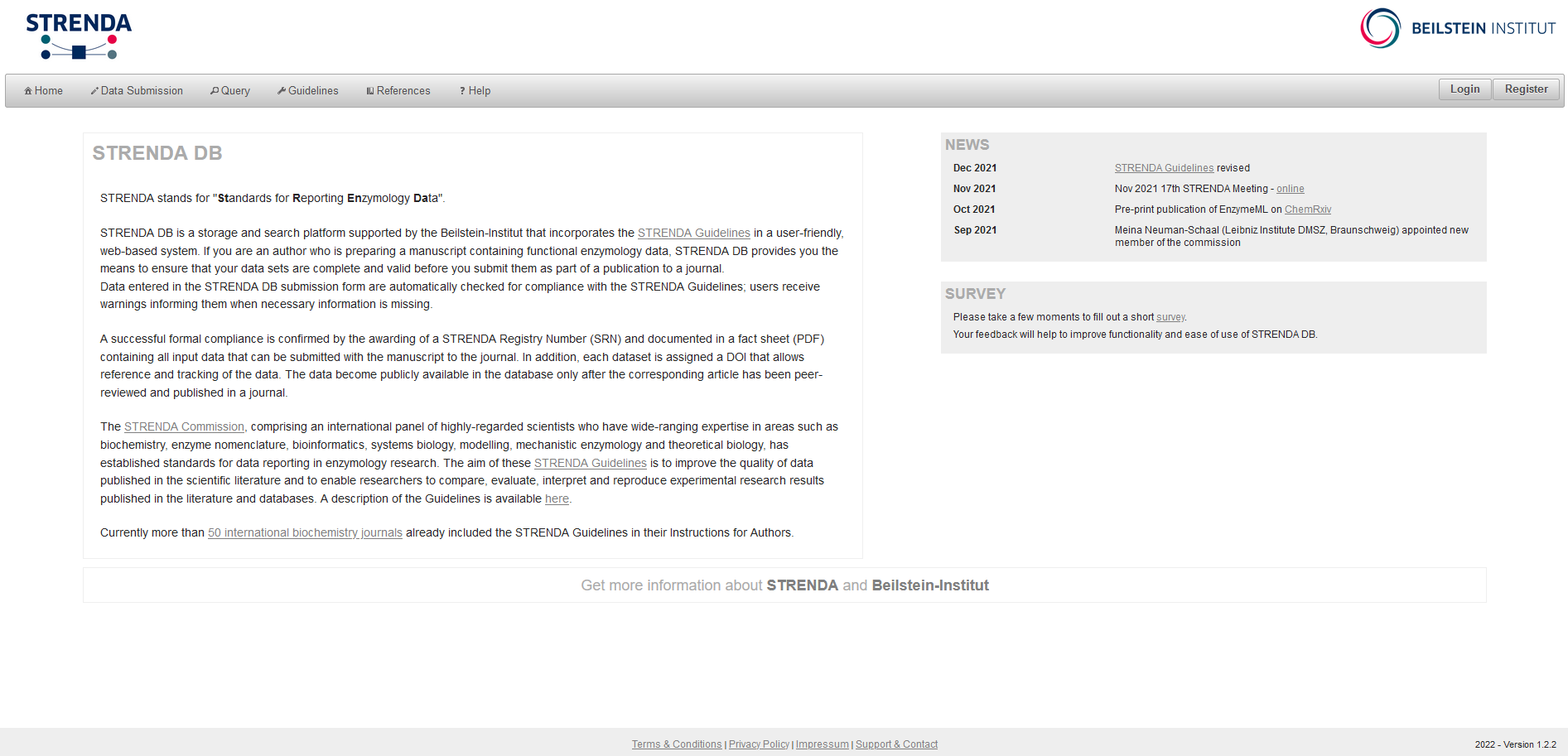For chemists, it is crucial to know the advantages of different data repositories in order to find the best fit for their research data requirements. Here, we provide a brief overview of STRENDA DB as part of our series “repositories in profile”.
STRENDA DB – Standards for Reporting Enzymology Data

Basic information
❏ Homepage: https://www.beilstein-strenda-db.org/strenda/
❏ Creation date: 2016
❏ Country: DE
❏ Domain: Life Science, Chemistry, Biological and food chemistry, Molecular Chemistry
❏ Usage: Open Access (data view), registration required (data contribution)
❏ Target group: Biochemists, systems biologists, biocatalysts
❏ User documentation: https://www.beilstein-strenda-db.org/strenda/help/STRENDA_DB_UserGuide_v0.92.pdf
❏ Number of datasets: 150
❏ Recommended by journals/societies: STRENDA Guidelines by over 55 international biochemistry journals recommended
❏ Listed in: re3data: r3d100012329, FAIRsharing: FAIRsharing.ekj9zx, Wikidata: Q58034053
Functionalities and technical information
❏ Content: Functional enzymology data (kinetic and experimental data)
❏ Content origin: From manuscripts, publications
❏ Searchable content: Enzyme kinetic data along with experimental conditions
❏ Accepted data types: Currently none, EnzymeML (in development)
❏ Used standards/ontologies: DataCite, InChI, EnzymeML (in development)
❏ Curation: Via automated data checking based on STRENDA Guidelines, fact sheet
(PDF) with submittable input data
❏ Access rights/license information/embargo: Creative Commons Attribution 4.0 International (CC BY 4.0), Term of Use, no embargo
❏ AAI solution: Internal user administration (user, administrator)
❏ Persistent Identifier system: DOI (Digital Object Identifier), PMID (PubMed Identifier)
❏ Authority identifier system: ORCID (Open Researcher and Contributor iD)
❏ Used Software: Oracle database, multilayer architecture
❏ Interfaces: HTML interface (GUI)
❏ Further functionalities/tools: Automated plausibility and quality check/peer review